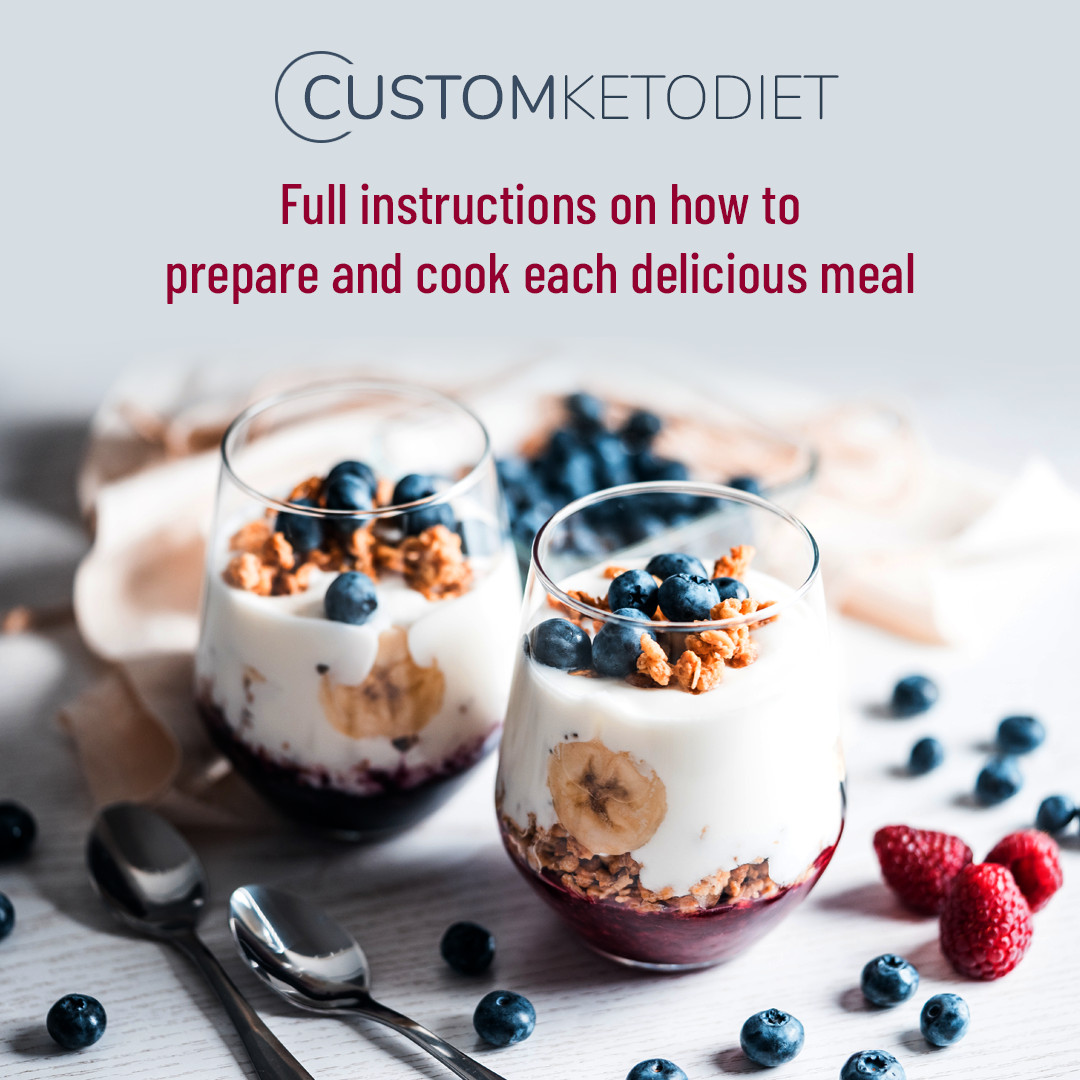
I'm finally sharing the keto pasta recipe everyone is talking about on my Facebook page and Instagram, and it (almost) tastes like the real deal!
A huge thank you and credit for developing the original keto noodle recipe goes to the amazing Ann from Keto Asian Flavour on YouTube who introduced me to molecular gastronomy. This recipe is adapted from Ann's keto pasta noodles.
Ann recommends softening the noodles before cooking by pouring several cups of water to the prepared noodles, and adding 2 tablespoons of lemon or lime juice, plus 1 tablespoon of baking soda. I found that I did not need to soften mine but you may need to do this if you use the Ann's original noodle recipe which is more sturdy.
There's no wheat gluten, no oat fibre, no nuts, no coconut, no psyllium, no dairy, and no cooking required. That means no sweetness or aftertaste from almond flour or coconut flour, and no tummy issues from oat fibre.
Do These Keto Noodles Taste Just Like Pasta?
I wouldn't say they taste exactly like pasta but they are the closest I ever got to real spaghetti. I made a total of six batches with different ratios of ingredients and tested the batches with my partner until we found the one we loved.
We both agreed that they are much better than shirataki noodles or other alternatives we've tried over the years. When combined with sauces, they were almost unrecognizeable from real pasta!
The only difference is the texture which feels more moist and more slippery than regular spaghetti. That's because these noodles are almost entirely made from water (at least in terms of weight). But unlike shirataki noodles, they did not taste rubbery. We will definitely be making them again... and again... and again!
What Do I Need to Make Keto Noodles?
These are the ingredients you will need to make keto spaghetti noodles:
- Water. You will need plenty of filtered water.
- Sodium alginate. This is the key ingredient in the noodle mixture. Similarly to glucomannan powder, when combined with water, it transforms into thick gel.
- Calcium lactate is the most important ingredient that makes it possible to shape the pasta into perfect noodles. Without this ingredient the recipe won't work. Instead of calcium lactate you can use calcium chloride which will produce similar results.
- Whole egg powder will make the keto spaghetti smell, taste and look close to real pasta.
- Lupin flour will improve the texture of these keto noodles. If you don't want to use lupin (it's a legume), simply replace it with more whole egg powder.
- Xanthan gum slightly improves the texture but can be omitted from this recipe. If you omit the xanthan gum, use 1/2 cup (120 ml) less water in the noodle mixture.
- Salt and flavor ingredients can be used to taste.

What is Calcium Lactate and Calcium Chloride?
Calcium lactate is a calcium salt made from the fermentation of lactic acid and calcium. It is a water-soluble grainy white powder. Just like calcium chloride, it's used in cheese making, to regulate acidity levels, as a food thickener and as a preservative for fresh fruits.
In molecular gastronomy, calcium lactate and calcium chloride are used for basic spherification when they are used in the bath, most commonly to make noodles containing sodium alginate. They can also be used for reverse spherification as a thickener when sodium alginate is used in the bath.
Is Sodium Alginate the same as Glucomannan Powder?
They are similar ingredients but they are not the same. Glucomannan powder is a soluble fibre made from konjak root. You may have heard about (or even tried) shirataki noodles which are made from glucomannan powder.
Sodium alginate is a gum which is made by extraction from brown seaweed. It's used as a thickening agent, gelling agent, emulsifier, stabilizer and texture-improver.
Both sodium alginate and glucomannan powder are highly absorbent ingredients that can soak up incredible amounts of water. Due to their high-fibre content, they will help you feel full for longer.
Finally, start slow. Both sodium alginate and glucomannan powder are high in fibre. Although I haven't experienced any side effects myself, they are known to cause mild GI issues in some people. Please use these ingredients with caution and start with small amounts. Most importantly, due to the risk of choking you should never consume dry glucomannan or sodium alginate powder.
Note: I've tested this recipe with glucomannan powder and the pasta didn't hold well together. It broke into short noodles. I suspect that happened due to the large amount of air bubbles in the konjak mixture. I will be testing this recipe more and update as soon as I find a way to make it work reliably.
Flavored Pasta Options
You can keep your pasta plain or add some of the options below:
- For cheesy pasta, add 1 tablespoon of nutritional yeast.
- For more yellow pasta, add 1/4 to 1/2 teaspoon of turmeric powder.
- For orange/red pasta, add 2 to 3 teaspoons of paprika.
- For black pasta (great for Halloween!), add a few drops of squid ink.
- For green pasta, add 1-2 tablespoons of spinach puree.
Can I Make Thinner Angel Hair Noodles?
Yes, you can! The size of the holes on your squeeze bottles will determine the size of your noodles. This squeeze bottle has smaller holes and will help you make thinner noodles.
You can also make thinner or thicker noodles by simply changing the pressure on the squeeze bottle. Make thinner noodles by squeezing less, or thicker noodles by squeezing more.
Finally, by skipping the xanthan gum (plus using 1/2 cup less water), the mixture will be more runny and you'll be able to make thinner noodles.

Preparation time
Hands-on: 15 minutes
Overall: 1 hour 15 minutes
Nutritional values (per 100 g/ 3.5 oz noodles)
| Total Carbs |
1.6 |
grams |
| Fiber |
1.5 |
grams |
| Net Carbs |
0.2 |
grams |
|
|
|
|
| Protein |
3.7 |
grams |
| Fat |
2.3 |
grams |
| of which Saturated |
0.7 |
grams |
|
|
|
|
| Energy |
38 |
kcal |
|
|
|
|
| Magnesium |
9 |
mg (2% RDA) |
| Potassium |
35 |
mg (2% EMR) |
Macronutrient ratio: Calories from carbs (2%), protein (41%), fat (57%)
Ingredients (makes about 1 kg noodles)
Noodles:
- 4 cups filtered water (960 ml)
- 6 tbsp whole egg powder (48 g/ 1.7 oz)
- 4 tbsp lupin flour (36 g/ 1.3 oz)
- 1/2 tsp sea salt
- 1/2 tsp xanthan gum
- 2 tbsp sodium alginate (18 g/ 0.7 oz)
Water bath:
- 1 tbsp calcium lactate (11 g/ 0.4 oz)
- 7 cups filtered water (1.7 L)
Instructions
- Start by pouring 4 cups (960 ml) of filtered water into a blender. Measure out all of the pasta ingredients: 6 tablespoons of whole egg powder, 4 tablespoons of lupin flour, 2 tablespoons of sodium alginate, 1/2 tsp sea salt and 1/2 tsp xanthan gum.

- Turn on the blender. Add the egg powder, lupin flour and salt and keep blending for a few seconds. Then add the xanthan gum and finally add the sodium alginate. Process until smooth, thick and creamy. Make sure there are no lumps.

- Pour the mixture in a bowl and use a rubber spatula to scrape any remaining mixture from the blender. Set aside to let the bubbles surface. Scrape the bubbles off with a rubber spatula to break. (You don't want too many bubbles in the mixture as that would cause the noodles to break.)
- Meanwhile, pour 7 cups (1.7 L) of filtered water into a bowl. Add 1 tablespoon of calcium lactate and stir until it's completely dissolved. This may take a few minutes.

- Transfer the mixture into a squeeze bottle. To make the noodles, start stirring the calcium lactate solution in one direction to create a whirlpool.
- Start squeezing the bottle to release the mixture into the water. The noodle will be as long as you keep pressing. Keep stirring and pressing until you use most of the mixture, and then refill the bottle and repeat the process.

- The noodles will still be too soft at this point. Place the bowl in the fridge for at least an hour or overnight. This will help the noodles set until firm enough.

- Drain and rinse the noodles and place in a container. Keep in the fridge for up to 5 days. (You don't have to keep them in water or the calcium lactate solution.)

- Serve just like spaghetti — heat up with sauces of choice! For softening tips, swaps and more, check the recipe tips above.

from KetoDiet Blog https://ift.tt/3ANIoOe
via
IFTTT




















































